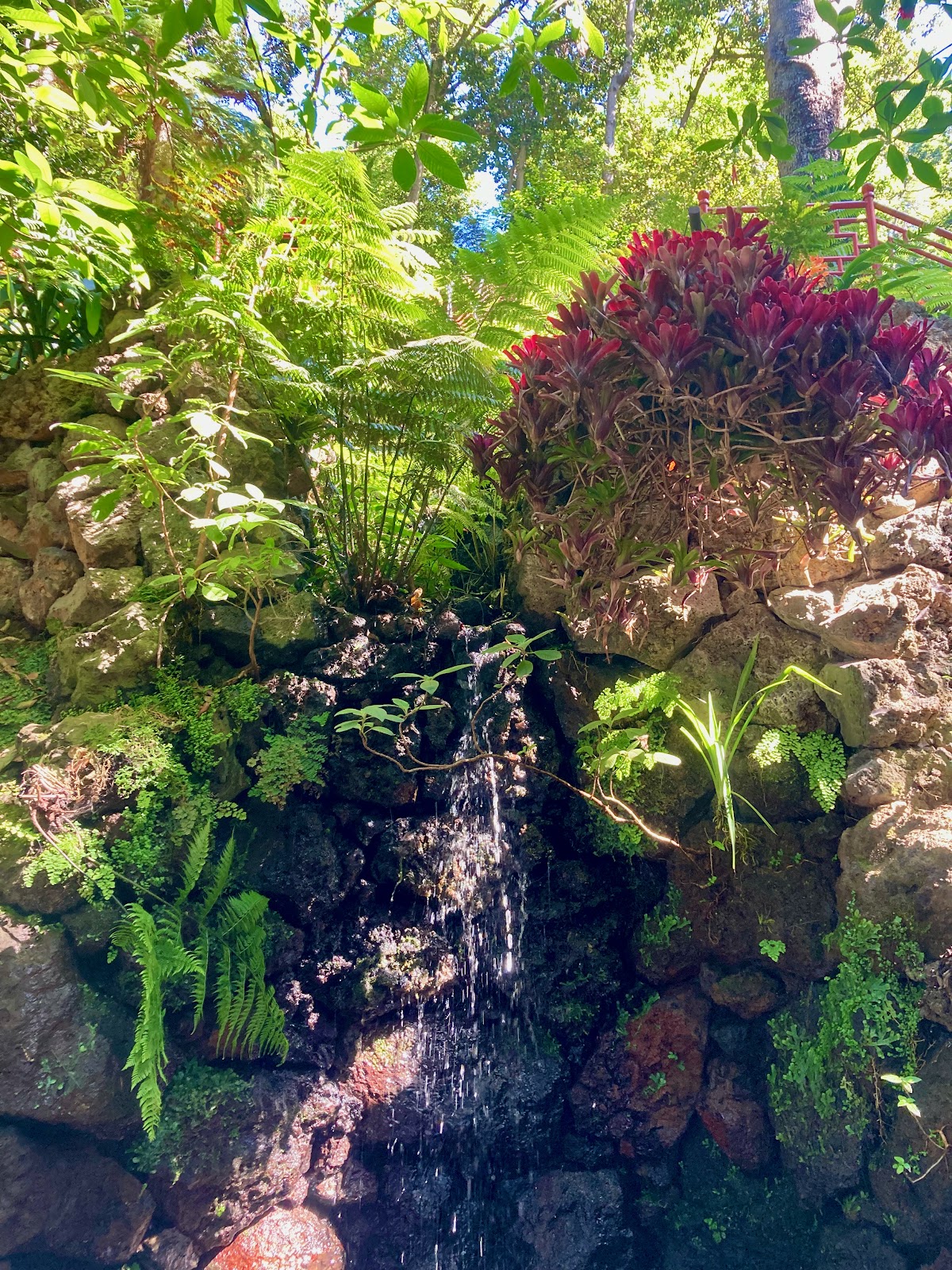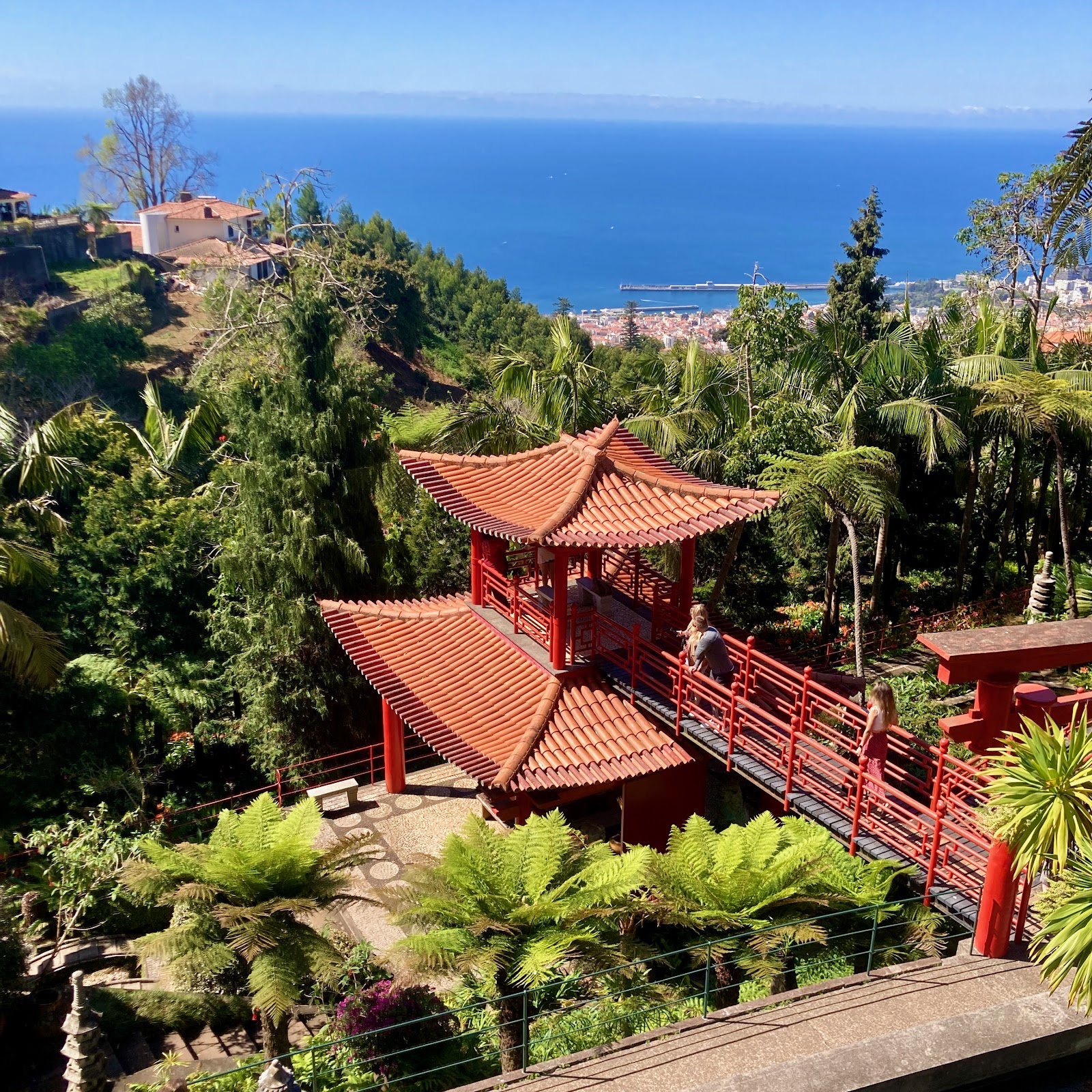Monte Palace Tropical Garden in Madeira
Monte Palace Tropical Garden in Madeira
In the 18th century the English Consul Charles Murray, bought a property on "Monte", a prime hilltop location, with panoramic views over Funchal's Bay and transformed it into a beautiful estate, then called "Quinta do Prazer" (The Pleasure Estate). Towards the end of the 19th century, some of the wealthiest families of Madeira used to live in fine estates situated on the outskirts of Funchal.
Around 100 years later, the estate was bought by Alfredo Rodrigues, who built a mansion that was later transformed into a hotel called Monte Palace Hotel.
When he passed away, the hotel was closed and the estate was taken over in 1987 by a financial institution businessman and art collector José Berardo, who completely transformed it into this magnificent work of art that we now call Quinta do Monte Palace or simply Monte Palace Tropical Garden.
Presently it is owned by the José Berardo Foundation and boasts over 100,000 plant species from all over the world spread over 70,000 sq. m area. There is no shortage of benches and sitting areas in the gardens. And there are umpteen scenic spots where you can stop and rest while enjoying great views over the garden, Funchal or the Ocean.
Famed for its indigenous Madeiran flora, the garden was classified as World Heritage by UNESCO in 1999. Madeira’s sub-tropical climate offers warm sunshine throughout the year making it amenable to grow a vast array of exotic plants from various countries (Cycads and Protea from South Africa, azaleas from Belgium, heather from Scotland, among others) and indigenous plants from the Madeira forest namely, "Laurissilva", such as ferns, cedars, laurels, Canary Laurels, etc.
From Asia, we can find a species of cycad, Cyca revolute and in both the oriental gardens we come across various tree ferns, whose lush green vegetation contrasts with the red and black of the bridges and railings.
There are also flowering plants such as the camellia, a shrub with evergreen leaves, highly valued for the number of attractive flowers that bloom, above all, in the winter and spring.
During a trip to China and Japan José Berardo became enchanted by their history, culture and way of life and by the influence of the Portuguese on the Orient over 200 years. As such, the two oriental gardens are an attempt to recreate that culture, linked to Buddhism, with its respect for Nature and its highly symbolic elements. They include stone lanterns and Buddha statues, Shinto torii gates, pagodas as well as a collection of of ceramic tiles depicting the Portuguese presence in Japan. The Portuguese were the first Westerners to set foot in Japan bringing with them the technology of firearms.
Water is also an important decorative feature in the form of lakes and waterfalls, with miniature islands and ornamental bridges. Next to the lakes containing Koi fish, two bamboo ornaments in the shape of pipes are to be seen. When these become filled with water and it is discharged into the lake, the resulting noise, apart from frightening away the birds, represents the passing of time.
The garden was also enriched with Koi fish, peacocks from India, black swans from Australia, white swans from Iceland, and Flamingos. Two more lakes with a capacity of 300,000 litres of water were also built. These incorporate a sophisticated filtering system and water purifier, without using chemicals that ensure a healthy habitat for the fish, which provides an enjoyable display of colours for our visitors.
The garden lanes were adorned with blazonry, squared stones, windows, niches, pagodas, Buddhas, lanterns from different parts of the world and sculptures in natural or cut stone. Walking through the garden, you can admire the renowned ceramic tile collection (dating from the 15th-20th centuries), a panel of 166 terracotta glazed tiles entitled "The adventure of the Portuguese in Japan" and a group of 40 panels portraying the History of Portugal, including the most important events of the kingdoms and the Republics.
Other tiles in the garden date from the 15th century until the present. The modern tile panels, a series of 40, are by Argentinian artist Alberto Cedrón on the theme of Portuguese history including the Portuguese monarchy, subsequent republics and the 1974 Revolution.
Various other art pieces decorate the gardens including some historic Manueline window frames as well as more modern works.
This millenarian olive tree was planted by the Romans 2300 years ago around 300 BC. The Romans were already harvesting olive oil from the tree at that time. After a 30-year study period in the area of Alqueva in the Alentejo Region of mainland Portugal it was determined that a dam approximately 3200 km square 9larger than the Island of Madeira) was to be created in that region, making it the largest man-made lake in Europe. As a result, this tree was transplanted to this garden.
References
1. Oriental Gardens. (n.d.). Monte Palace Tropical Garden. Retrieved May 10, 2024, from https://montepalace.com
2. Susie. (2024, March 27). A complete guide to Monte Palace Tropical Gardens, Madeira. World Travel Toucan. Retrieved May 10, 2024, from https://worldtraveltoucan.com/monte-palace-tropical-gardens/
3. Monte Palace Tropical Garden. (n.d.). Portugal Visitor - Travel Guide to Portugal. Retrieved May 10, 2024, from https://www.portugalvisitor.com/madeira/monte-palace-tropical-garden
2. Susie. (2024, March 27). A complete guide to Monte Palace Tropical Gardens, Madeira. World Travel Toucan. Retrieved May 10, 2024, from https://worldtraveltoucan.com/monte-palace-tropical-gardens/
3. Monte Palace Tropical Garden. (n.d.). Portugal Visitor - Travel Guide to Portugal. Retrieved May 10, 2024, from https://www.portugalvisitor.com/madeira/monte-palace-tropical-garden













Beautifully put together past and present
ReplyDeleteWalked with the narrator in the garden, beautifully written.
ReplyDelete